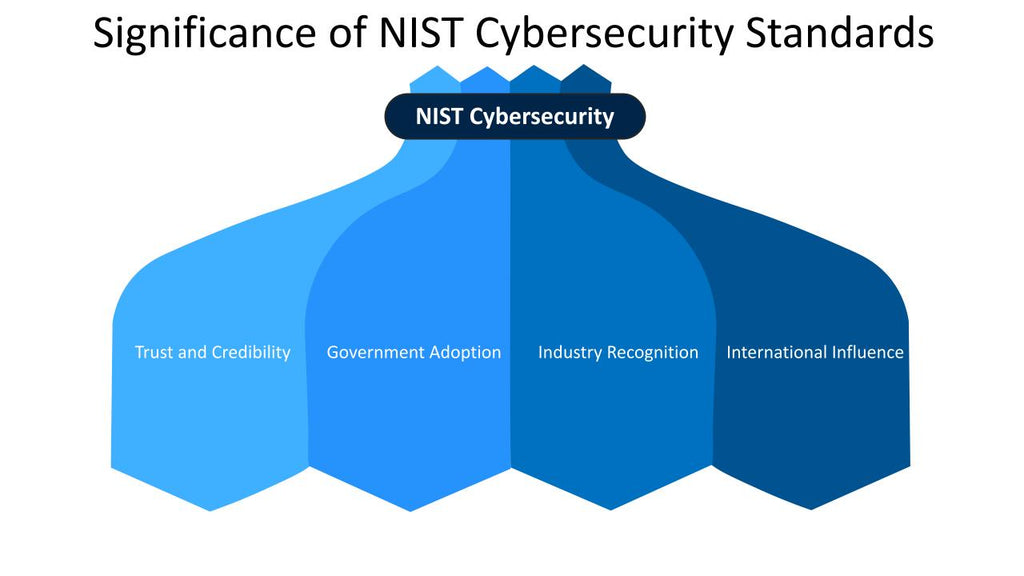Protecting Digital Assets: Implementing NIST Cybersecurity Best Practices
Intro
Given the rapidly evolving cyber threats, cybersecurity is paramount for organizations of all sizes and industries in today's digital age. The National Institute of Standards and Technology (NIST) provides guidance and standards to fortify cybersecurity defenses. Explore the NIST cybersecurity standards, highlighting their significance, key components, and implementation strategies. NIST standards serve as a beacon for organizations, offering comprehensive frameworks and guidelines to mitigate risks and protect against cyberattacks. By understanding and implementing NIST cybersecurity standards, organizations can bolster their defenses, navigate the complexities of the digital landscape, and stay ahead of emerging threats.

Significance of NIST Cybersecurity Standards
NIST, a non-regulatory agency of the U.S. Department of Commerce, has been at the forefront of developing cybersecurity standards that are widely respected and recognized globally. The significance of NIST cybersecurity standards stems from several key factors:
- Trust and Credibility: NIST has a long-standing reputation for excellence in research and standards development. Its cybersecurity standards are based on rigorous research, industry best practices, and input from cybersecurity experts, earning them trust and credibility among stakeholders.
- Government Adoption: NIST cybersecurity standards are endorsed and mandated by various government agencies and departments, including the Federal Information Security Management Act (FISMA). This widespread adoption ensures consistency and interoperability across government systems and promotes alignment with industry best practices.
- Industry Recognition: NIST cybersecurity standards are widely recognized and respected in the public and private sectors. Many organizations look to NIST standards as a benchmark for cybersecurity best practices, driving their adoption and implementation in various industries.
- International Influence: NIST's leadership in cybersecurity standards has a global impact, influencing standards development and adoption worldwide. International organizations and governments often reference NIST standards in their cybersecurity initiatives, further solidifying their importance on the worldwide stage.
Key Components of NIST Cybersecurity Standards
NIST cybersecurity standards encompass a broad spectrum of guidelines, publications, and frameworks designed to address different aspects of cybersecurity. Some key components of NIST cybersecurity standards include:
- NIST Special Publication (SP) Series: The NIST SP series covers a wide range of cybersecurity topics, including risk management (SP 800-37), security controls (SP 800-53), incident response (SP 800-61), and cryptographic standards (SP 800-57). These publications provide detailed guidance and recommendations for implementing effective cybersecurity measures.
- NIST Cybersecurity Framework (CSF): The NIST CSF is a voluntary framework designed to help organizations manage and reduce cybersecurity risk. It consists of five core functions – Identify, Protect, Detect, Respond, and Recover – which are the foundation for developing and implementing cybersecurity programs.
- Risk Management Framework (RMF): The RMF is a structured process for managing cybersecurity risk in federal information systems. It provides a disciplined and structured approach to identifying, assessing, and mitigating cybersecurity risks throughout the system lifecycle.
- Special Publications (SP) 800-171 and 800-53: SP 800-171 provides requirements for protecting Controlled Unclassified Information (CUI) in non-federal systems and organizations, while SP 800-53 provides security controls for federal information systems and organizations. These publications are instrumental in ensuring sensitive information's confidentiality, integrity, and availability.
Implementing NIST Cybersecurity Standards
Implementing NIST cybersecurity standards requires a systematic approach tailored to the organization's needs and objectives. Here are some key steps to consider:
- Assess Current State: Conduct a thorough assessment of the organization's current cybersecurity posture, including existing policies, procedures, and security controls. Identify areas of strength and weakness to inform the implementation strategy.
- Define Objectives: Clearly define the organization's cybersecurity objectives and priorities based on its risk appetite, regulatory requirements, and business goals. Establish measurable goals and metrics to track progress and success.
- Select Appropriate Standards: Identify the relevant NIST cybersecurity standards and guidelines that align with the organization's objectives and requirements. Tailor the selection based on the organization's size, industry, and regulatory environment.
- Develop Implementation Plan: Develop a detailed implementation plan outlining the steps, timelines, and resources required to implement the selected NIST cybersecurity standards. Assign roles and responsibilities to ensure accountability and coordination across the organization.
- Implement Controls and Processes: Implement the necessary security controls, processes, and procedures outlined in the selected NIST standards. This may involve deploying technical solutions, updating policies and procedures, and providing training and awareness programs for employees.
- Monitor and Evaluate: Continuously monitor and evaluate the effectiveness of the implemented controls and processes. Conduct regular assessments and audits to identify areas for improvement and ensure compliance with NIST cybersecurity standards.
Conclusion
In today's digital landscape, cybersecurity is a top priority for organizations looking to protect their assets, data, and reputation. NIST cybersecurity standards offer a valuable framework for organizations to enhance their cybersecurity posture and effectively manage cybersecurity risks. Organizations can strengthen their defenses, mitigate risks, and build resilience against cyber threats by adopting and implementing NIST standards. However, successful implementation requires commitment, resources, and ongoing dedication to continuous improvement. By embracing NIST cybersecurity standards, organizations can confidently and resiliently navigate the complex cybersecurity landscape.





